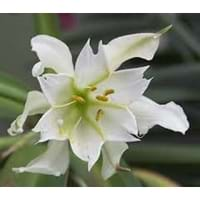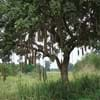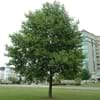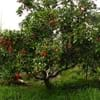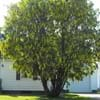Life Span
Perennial
Perennial
Type
Tree
Bulb or Corm or Tuber
Origin
Eastern Africa, Middle Africa
South America
Types
Not Available
Pamianthe cardenasii , Pamianthe parviflora , Pamianthe peruviana
Number of Varieties
Not Available
Habitat
Riverine forest, wooded grassland
All sorts of environments
USDA Hardiness Zone
9-12
8-10
Sunset Zone
H1, H2, 12, 13, 19, 20, 21, 22, 23, 24
21,22
Habit
Arching/Fountain-shaped
Clump-Forming
Flower Color
Dark Red, Tan
White
Flower Color Modifier
Bicolor
Bicolor
Leaf Color in Spring
Green, Dark Green
Dark Green
Leaf Color in Summer
Green, Dark Green
Light Green
Leaf Color in Fall
Green, Dark Green
Several shades of Green
Leaf Color in Winter
Not Available
Light Green
Leaf Shape
Pinnate
Strap shaped
Plant Season
Spring, Summer, Fall, Winter
Spring, Summer, Fall
Sunlight
Full Sun
Partial Sun, Partial shade
Type of Soil
Loam, Sand
Loam, Sand
The pH of Soil
Acidic, Neutral, Alkaline
Acidic, Neutral, Alkaline
Soil Drainage
Average
Average
Bloom Time
Indeterminate
Spring, Late Spring, Early Summer, Summer, Late Summer
Tolerances
Drought, Salt
Drought
Where to Plant?
Ground
Ground, Pot
How to Plant?
Seedlings
Offsets
Plant Maintenance
Medium
Medium
Watering Requirements
Needs a lot of water initially
Keep the ground moist but not water-logged
In Summer
Lots of watering
Lots of watering
In Spring
Moderate
Moderate
In Winter
Average Water
Average Water
Soil pH
Acidic, Neutral, Alkaline
Acidic, Neutral, Alkaline
Soil Type
Loam, Sand
Loam, Sand
Soil Drainage Capacity
Average
Average
Sun Exposure
Full Sun
Partial Sun, Partial shade
Pruning
Remove damaged leaves, Remove dead branches, Remove dead leaves
Pinch or prune as they grow to promote branching and bushiness, Remove damaged leaves, Remove dead branches, Remove dead leaves, Requires little pruning
Fertilizers
Balanced liquid fertilizer monthly
All-Purpose Liquid Fertilizer, High phosphorus
Pests and Diseases
Leaf spot, Mealybugs, Rust
Leaf spot, Mosaic viruses
Plant Tolerance
Drought
Drought
Flower Petal Number
Single
Single
Foliage Texture
Coarse
Coarse
Foliage Sheen
Glossy
Glossy
Attracts
Bees, Birds, Butterflies, Not Available
Bees, Birds, Bumblebees, Butterflies, Hummingbirds, pollinators
Allergy
Poisonous when unripe
Unknown
Aesthetic Uses
Not Used For Aesthetic Purpose
Beautification, Bouquets, Ornamental use, Showy Purposes
Beauty Benefits
Acne, Slow downs aging
No Beauty Benefits
Environmental Uses
Air purification
Air purification
Medicinal Uses
Gynaecological, Malaria, STDs
No Medicinal Use
Part of Plant Used
Dried seeds, Leaves
Not Available
Other Uses
Used to flavour beer, Used to produce a red dye
Beneficial species for attracting pollinators, Decoration Purposes
Used As Indoor Plant
No
No
Used As Outdoor Plant
Yes
Yes
Garden Design
Feature Plant, Shade Trees, Tropical
Bog Garden, Container, Feature Plant, Foundation, Mixed Border, Water Gardens
Botanical Name
KIGELIA africana
HYMENOCALLIS longipetala
Common Name
Sausage Tree
Peruvian Daffodil, Spiderlily
In Hindi
Sausage Tree
peruvian daffodil
In German
Sausage Tree
peruvian daffodil
In French
saucisse Arbre
peruvian daffodil
In Spanish
Árbol de salchicha
Pamianthe
In Greek
λουκάνικο δέντρο
peruvian daffodil
In Portuguese
Árvore de salsicha
peruvian daffodil
In Polish
kiełbasa Drzewo
peruvian daffodil
In Latin
farciminis ligno
peruvian daffodil
Phylum
Magnoliophyta
Magnoliophyta
Class
Magnoliopsida
Liliopsida
Order
Lamiales
Asparagales
Family
Bignoniaceae
Amaryllidaceae
Genus
Kaempferia
Pamianthe
Clade
Angiosperms, Asterids, Eudicots
Angiosperms, Monocots
Tribe
Tecomeae
Clinantheae
Subfamily
Not Available
Amaryllidoideae
Number of Species
Not Available
Not Available
Season and Care of Sausage Tree and Peruvian Daffodil
Season and care of Sausage Tree and Peruvian Daffodil is important to know. While considering everything about Sausage Tree and Peruvian Daffodil Care, growing season is an essential factor. Sausage Tree season is Spring, Summer, Fall and Winter and Peruvian Daffodil season is Spring, Summer, Fall and Winter. The type of soil for Sausage Tree is Loam, Sand and for Peruvian Daffodil is Loam, Sand while the PH of soil for Sausage Tree is Acidic, Neutral, Alkaline and for Peruvian Daffodil is Acidic, Neutral, Alkaline.
Sausage Tree and Peruvian Daffodil Physical Information
Sausage Tree and Peruvian Daffodil physical information is very important for comparison. Sausage Tree height is 1,220.00 cm and width 910.00 cm whereas Peruvian Daffodil height is 61.00 cm and width 61.00 cm. The color specification of Sausage Tree and Peruvian Daffodil are as follows:
Sausage Tree flower color: Dark Red and Tan
Sausage Tree leaf color: Green and Dark Green
Peruvian Daffodil flower color: White
- Peruvian Daffodil leaf color: Dark Green
Care of Sausage Tree and Peruvian Daffodil
Care of Sausage Tree and Peruvian Daffodil include pruning, fertilizers, watering etc. Sausage Tree pruning is done Remove damaged leaves, Remove dead branches and Remove dead leaves and Peruvian Daffodil pruning is done Pinch or prune as they grow to promote branching and bushiness, Remove damaged leaves, Remove dead branches, Remove dead leaves and Requires little pruning. In summer Sausage Tree needs Lots of watering and in winter, it needs Average Water. Whereas, in summer Peruvian Daffodil needs Lots of watering and in winter, it needs Average Water.

